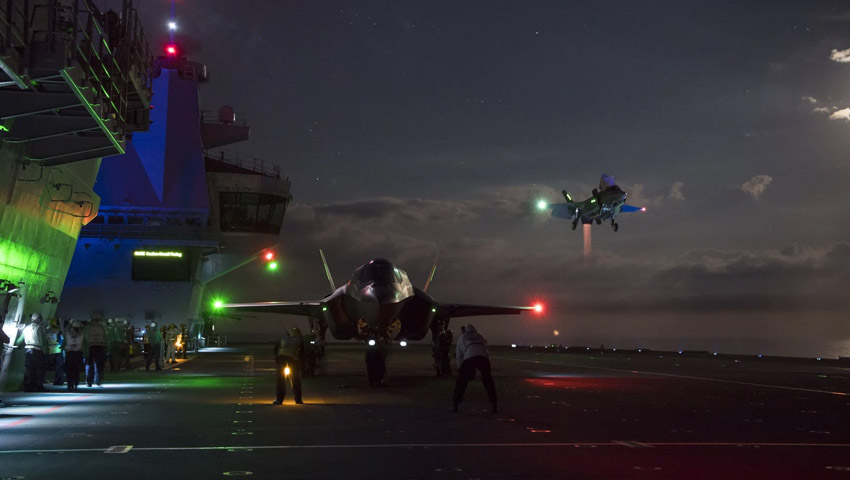Commander of US Marine Corps Forces Europe and Africa, Major General Stephen Neary has toured the Royal Navy’s newest aircraft carrier HMS Queen Elizabeth in Portsmouth, UK, ahead of the ship’s maiden voyage to the Indo-Pacific.
To continue reading the rest of this article, please log in.
Create free account to get unlimited news articles and more!
During the visit, MajGen Neary met with the carrier’s leadership and toured the HMS Queen Elizabeth (QNLZ) to increase understanding of the US Marine Corps’ future operations with the UK Carrier Strike Group.
US Marines from Marine Fighter Attack Squadron 211, along with approximately six F-35B aircraft, will support the ship’s inaugural deployment in 2021. VMFA-211 will work alongside the UK’s 617 squadron as Carrier Strike Group-21.
MajGen Neary said, "This deployment shows the true span of US Marine Corps operations across the theatre. The US Marine Corps has a longstanding special relationship with the Royal Navy and the Royal Marines, so having us operate from the Queen Elizabeth is another milestone in the relationship."
Neary also visited the Commandant General of the Royal Marines Commando, Major General Matt Holmes – during their visit they discussed the importance of integrating the US Marines and Royal Marines on this deployment and future partnership opportunities.
"US Forces are postured throughout the European theatre, ready to defend the NATO alliance and to deter adversary activities. It’s not just about us working with one country in one place – it’s about this alliance working across the theatre in innovative ways," MajGen Neary added.
The upcoming deployment of US Marine Corps F-35Bs aboard the QNLZ highlights the amphibious application of Joint Strike Fighters from a UK carrier. This deployment demonstrates that US and UK allied forces are more than interoperable – they are integrated.
Britain's reorientation and renewed focus on the Indo-Pacific in particular will see an increasing rotation and semi-permanent presence of Royal Navy assets in the not-to-distant future, with what is becoming known as Carrier Strike Group 21 (CSG21) to become a corner stone of the renewed global Britain.
In order to achieve this, the Royal Navy and Royal Air Force have used late 2019 and early 2020 as an opportunity to stand up the integration of the fifth-generation F-35 Joint Strike Fighter force for the two carriers off the coast of the UK.
This working up process builds on the training and trial programs HMS Queen Elizabeth conducted off the coast of the US in conjunction with the US Marine Corps as both forces continue to develop platform interoperability and new combat doctrines.
Commanding Officer of HMS Queen Elizabeth, Captain Angus Essenhigh, recently explained the importance of the working up and trials, stating:
“We have proven the range at which we can operate HMS Queen Elizabeth together with her jets, having spent the past two autumns in the USA. There is now tremendous training value to be gained for both my Ship’s Company, and the Lightning Force team at RAF Marham as we work together to operate our jets to and from the ship from their land base,” he said.

 Login
Login







